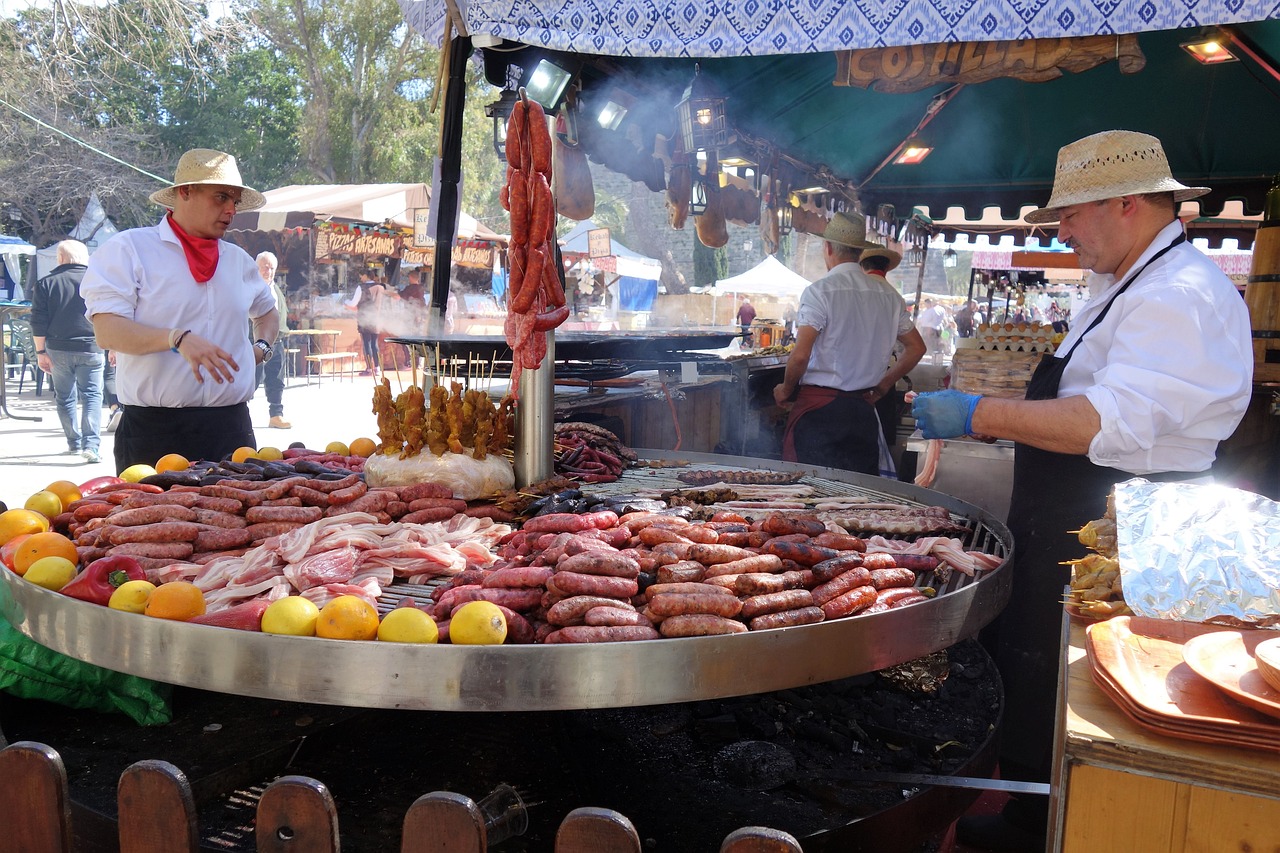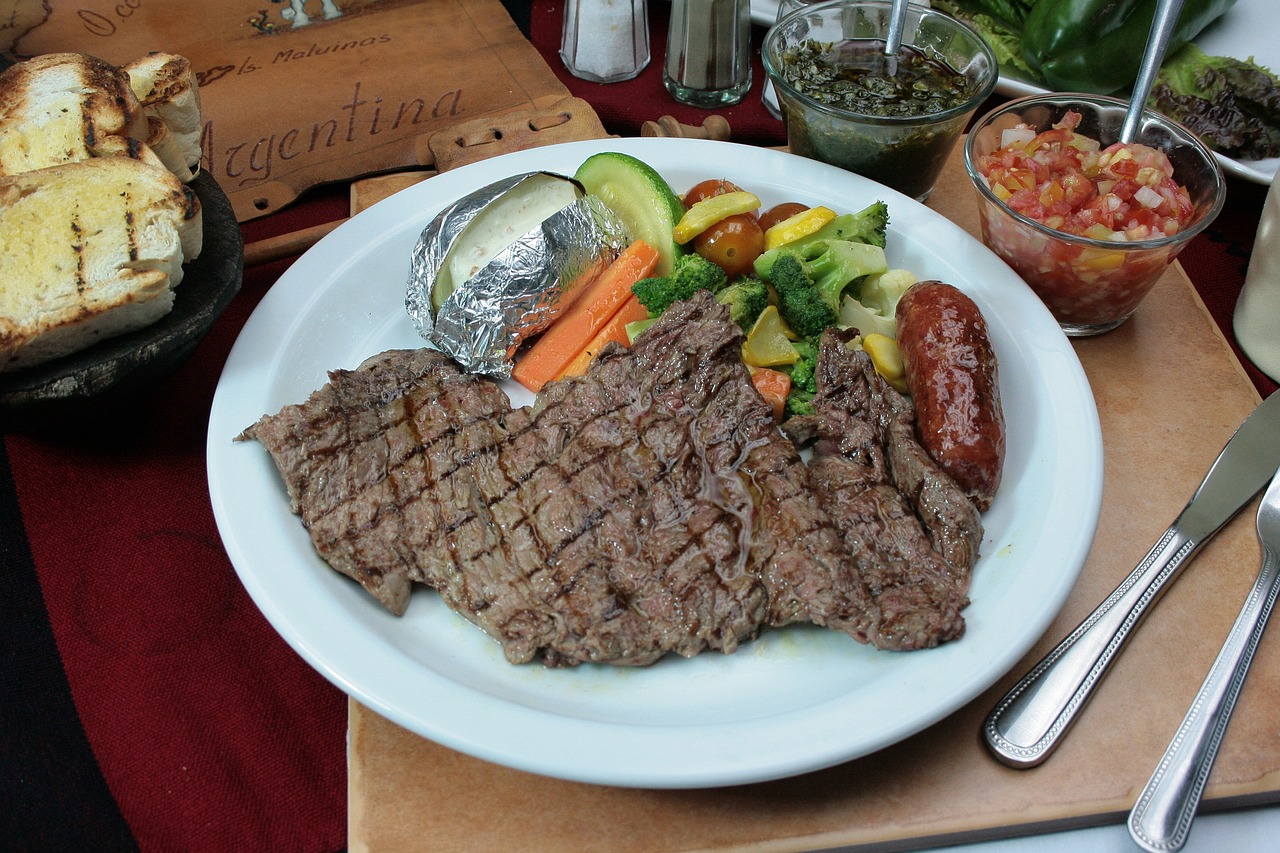Argentine Asado: The Star of Grilled Meats

Argentine Asado, known as the shining star of grilled meats, holds a special place in the hearts and palates of Argentinians. This revered culinary tradition goes beyond just cooking meat; it embodies a cultural heritage that has been passed down through generations. The art of preparing an Argentine asado involves more than just grilling meat – it is a celebration of flavors, techniques, and community.
History of Asado in Argentina
Argentine asado has a deep-rooted history that dates back to the days of the gauchos, the skilled horsemen of the Argentine plains. These cowboys would gather around open fires, roasting meat on skewers over the flames after a long day of herding cattle. This simple yet flavorful method of cooking laid the foundation for what would become a cherished culinary tradition in Argentina.
Asado became more than just a way to cook meat; it evolved into a social event that brought families and friends together. The art of grilling meat became intertwined with Argentine culture, symbolizing community, celebration, and the joy of sharing a delicious meal with loved ones.
The term "asado" itself refers not only to the meal but also to the act of grilling. It represents a way of life in Argentina, where the process of preparing and enjoying grilled meats is steeped in tradition and passion. Each gathering around the grill is an opportunity to connect, relax, and savor the rich flavors of the meats cooked to perfection.
Throughout history, asado has adapted and evolved, incorporating influences from various immigrant communities that have made Argentina their home. This fusion of culinary traditions has enriched the flavors and techniques used in asado, creating a diverse and vibrant culinary landscape that continues to captivate food enthusiasts around the world.
Types of Meat Used in Asado
When it comes to Argentine asado, the types of meat used play a crucial role in creating the perfect culinary experience. Here are some of the most popular cuts of meat commonly featured in an Argentine asado:
- Bife de Chorizo: This is a thick sirloin or New York strip steak, known for its juicy and flavorful taste.
- Costillas: Beef ribs are a staple in Argentine asado, offering a rich and robust meaty flavor.
- Morcilla: A type of blood sausage that adds a unique and savory element to the grilling experience.
- Chorizo: These flavorful sausages are a must-have at any Argentine asado, providing a burst of smoky and spicy flavors.
- Matambre: Thinly sliced beef flank steak stuffed with herbs, vegetables, and hard-boiled eggs, offering a delicious and tender option.
Each cut of meat brings its own distinct flavor and texture to the table, contributing to the overall sensory experience of Argentine asado. Whether you prefer the succulent tenderness of bife de chorizo or the bold flavors of chorizo sausage, there is a meat option to satisfy every palate at the grill.
Traditional Asado Techniques
When it comes to traditional Argentine asado techniques, it's all about embracing the time-honored methods that have been passed down through generations. Picture this: a crackling wood-fired grill, the aroma of sizzling meats filling the air, and the sound of friends and family gathering around to enjoy the feast. It's a culinary experience like no other, steeped in history and tradition.
One of the key aspects of traditional asado is the art of slow cooking. Argentine gauchos perfected the technique of cooking meat low and slow over an open flame, allowing the flavors to develop and the meat to become tender and juicy. This method requires patience and skill, as the meat is carefully monitored and turned to ensure even cooking.
Another essential element of Argentine asado is the use of wood-fired grills, typically fueled by hardwood such as quebracho or algarrobo. The smoky flavor imparted by the wood adds a unique depth to the meats, enhancing their natural richness. The choice of wood and the skill of the grill master play a crucial role in achieving that perfect balance of smokiness and tenderness.
Furthermore, the selection of cuts of meat is crucial in traditional asado. From the succulent short ribs known as "asado de tira" to the flavorful flank steak or "vacío," each cut is carefully chosen for its texture and taste. The meats are often seasoned simply with salt to allow their natural flavors to shine, showcasing the quality of the meat itself.
Asado is not just a meal; it's a social event that brings people together to celebrate and enjoy good food in good company. The process of grilling the meats is as much about camaraderie as it is about cooking, with friends and family gathering around the grill to share stories, laughter, and, of course, delicious food.
Accompaniments and Side Dishes
When it comes to Argentine asado, the accompaniments and side dishes play a crucial role in enhancing the overall dining experience. These flavorful additions complement the grilled meats and elevate the meal to a whole new level of gastronomic delight. One of the most iconic accompaniments to Argentine asado is chimichurri sauce, a zesty and herbaceous condiment made with parsley, garlic, vinegar, and olive oil. This tangy sauce adds a burst of flavor to the grilled meats, cutting through the richness and providing a refreshing contrast.
In addition to chimichurri sauce, a variety of salads often accompany Argentine asado, offering a lighter and fresher element to balance out the hearty meats. Crisp and refreshing, these salads typically feature a mix of fresh vegetables, such as tomatoes, onions, and bell peppers, dressed simply with olive oil and vinegar. The vibrant colors and textures of the salads provide a refreshing contrast to the smoky flavors of the grilled meats.
Grilled vegetables are another popular side dish served alongside Argentine asado, adding a touch of sweetness and charred flavor to the meal. Vegetables like bell peppers, zucchini, and eggplant are seasoned with olive oil, salt, and pepper before being grilled to perfection. The caramelization of the vegetables brings out their natural sweetness, creating a harmonious balance with the savory meats.
Furthermore, empanadas are often included in an Argentine asado spread, offering a delightful handheld treat filled with savory ingredients such as beef, onions, and spices. These flaky pastries are a beloved part of Argentine cuisine and provide a convenient and delicious way to enjoy a variety of flavors alongside the grilled meats.
Lastly, crusty bread is a staple at any Argentine asado gathering, serving as the perfect vehicle for sopping up juices and sauces from the grilled meats. Whether it's a simple baguette or a traditional Argentine bread like pan de campo, the bread adds a comforting element to the meal, ensuring that no flavor is left behind.



 HazalVardal
HazalVardal 





